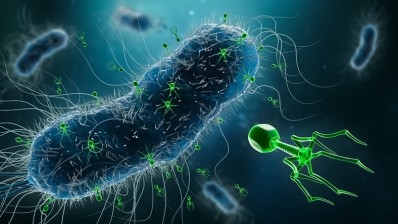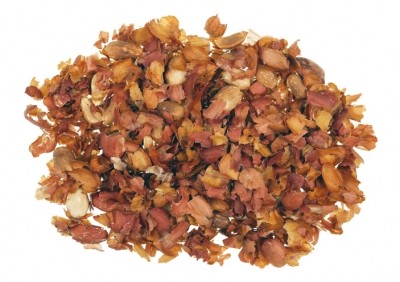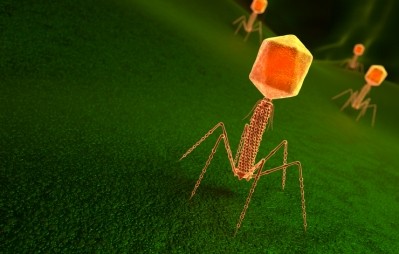Webinar insights: Future pathway to optimum chicken gut health lies in using microbiota-produced metabolites and exploring microbial ecology in situ

In a live FeedNavigator webinar on Wednesday [November 4], Dr Mike Kogut, lead scientist at the USDA ARS in College Station, Texas, in the US, outlined the five components that make up a healthy gut and that, when working in unison, would lead to a state of homeostasis – which is when the animal is able to reach 100% of its genetic potential for growth and performance.
Those five elements are:
- Effective digestion, food absorption
- Stable microbial population
- Effective immune status
- Effective gut barrier
- Effective neuroendocrine system
“A stable, diverse microbial population is a big part of it. Even though they are listed as five separate entities they all act together – if you change one, you change them all; the microbiota plays a role in every component, the interaction between the microbiota and the immune system is very important for the education and the development of an immune function, both systemically and locally. The microbiota is involved in gut barrier function, and in neuroendocrine regulation,” he explained.
Missed out? The FeedNavigator Poultry Gut Health Webinar can be accessed on-demand. Check it out.
Why manipulate the bird's microbiota?
There are three main reasons outlined in the literature as to why researchers are looking to manipulate the animal’s microbiota, said Kogut.
One is to improve performance, to get the bird to perform, to put on more weight, to accrue more muscle. Another is to prevent disease, to hinder colonization of campylobacter or salmonella, and researchers want to modulate the immune system using a more natural approach as opposed to relying on drugs, outlined the scientist.
“But really, when it comes down to it, what we are really trying to do by manipulating the microbiota, is to change function, whether that means trying to fill in for a missing function or to eliminate a harmful one.
“So it is not necessarily about changing bugs, it is about changing the function of the bugs.”
Current strategies
Different strategies are currently being used for therapeutic manipulation of the bird’s microbiota.
“We are all aware that antibiotics can manipulate the microbiota but in today’s poultry world we are not using those except for therapeutic purposes to treat infection disease. We know we can change the diet of an animal and get it to change its microbiota, what we don’t yet have an handle on is how much, when and the degree of change that it is occurring [from such a strategy].
“We also know that feed additives like enzymes that are added to breakdown complex nutrients in a diet can certainly change the microbiota but there is very little data on how much enzymes can manipulate the microbiota.”
Biotics is the area with the most data in the literature when it comes to microbiota manipulation in animals, and biotics comprises probiotics, prebiotics and synbiotics, he said.
But Kogut outlined the limitations of biotics in this respect.
“Prebiotics are not there for the host, they are given specifically to feed microorganisms, whether that be an established microbiota in the gut or to feed a probiotic that has been given – in other worlds a synbiotic.
“Obviously there are advantages, you can do this very well in the laboratory, but there are issues with this approach in the field.
“In terms of probiotics, we are talking about giving, in many cases, one or two bugs that must reach a specific part of the gut, and if it needs to reach the caecum, it has a long distance to travel. The other aspect, unless we are giving it at hatch, is that a probiotic has to compete with trillions and trillions of microbes that have already established themselves. It is very difficult to believe that a probiotic can effectively establish and function the way you want it to [under such conditions].”
Kogut said industry has to get over the idea of identifying every bug in a population and instead focus on understanding how a population functions and what can be done to manipulate that population in order to maintain or increase the metabolic function of a specific part of the gut.
Future strategies
Looking at future strategies to microbiota manipulation, he outlined various ones that are currently being explored by industry. For Kogut, strategies based around subtractive approaches such as chemicals, peptides and phages to remove specific bacteria from the gut or ones based on microbiome engineering are “pie in the sky” due to associated regulatory and consumer issues.
“We are not going to engineer microbes and give them back to the animal and convince the consumer and regulatory agencies that this is stable.
“Likewise, we are not going to provide some sort of approach where there is a chemical [or phage] that is going to subtract from bugs that are already there because of regulatory issues. It works great in the lab but is not something I see happening in the very near future.”
A strategy based on immunoregulatory commensals, with many probiotics being given as manipulators of the immune system, does show potential but lab work needs to continue in this respect, he said. “We are getting a better handle on which specific bugs can manipulate specific components of the immune system and as we get more information on that we may be able to produce more of those immunoregulatory probiotics.”
Postbiotics show most potential
Postbiotics are non-viable bacterial products or metabolic byproducts from probiotic microorganisms that have positive effects on the host or microbiota, and they offer real promise, he said.
“Postbiotics are created when you take a probiotic and kill it through heat or another treatment.”
Bacterial lysates, short-chain fatty acids, cellular wall fragments, and metabolites that the bugs have produced are the postbiotic materials that can result from such action.
“Where can we go with postbiotics? What I am talking about, in terms of the future, is taking the metabolites produced by a population of microbiota and giving those to [the bird] as a means of manipulating what is going on at the intestinal level.
“What I mean by that, and what makes this different from a probiotic or even a prebiotic, is that a postbiotic metabolite or a conglomeration of metabolites is not working directly on the microbiota itself. They are being given to manipulate the host so that the host is reacting to what the microbiota produces, and then produces its own metabolites to communicate with and work with the microbiota that are already there.
“This then makes the potential function of a probiotic or a prebiotic, either together or singularly, that much more useful because now they are not there to be the primary manipulator but they are there to help manipulate the changes that have occurred.
“So working together as a multi-factorial system to manipulate the microbiota is where I think we are heading.”
Kogut stressed that for industry to pursue such a multi-factorial system for microbiota manipulation, it is essential to understand microbial ecology in situ, to know populations and how they function, and how that population communicates with the host.
A study by Kogut et al, 2019 shows the effectiveness of poultry gut health strategies based on postbiotics. It can be accessed here.


















